Known for its natural beauty, delicious fruit, and religious landmarks, the Philippines is a collection of over 7,000 islands that stretch out into the Pacific Ocean in Southeast Asia.
With a population of approximately 108 million, Philippine people are famous for valuing family, their sense of humor, hospitality, and hard work.
The Philippine islands have a large Spanish influence, and even get their name from King Phillip of Spain, who was leader when the Spanish army conquered the country in 1521.
It wasn’t until 1898 that the people of the Philippines gained their independence.
The island nation is one of the world’s biggest suppliers of coconuts, papayas, and bananas.
If you’re a fan of shopping, the Philippines is home to 3 of the 10 largest malls in the world.
These islands in the South Pacific can make for a great vacation.
With beautiful beaches, some great scuba and snorkeling, ancient cathedrals, museums, mountains, and nightlife, you can have the time of your life.
However, visitors are urged to use caution in many parts of the country.
Some areas of the Philippines even have travel advisories, while others have all-out bans.
Most of the threats to visitors are limited to non-violent crimes like theft, scams, and taxi ripoffs.
There have been several incidents of assault, armed robbery, and kidnapping.
Last year there were a total of 379.5 thousand crimes reported in the Philippines.
This includes 9,784 murders.
From January to November of last year, there were an average of 22 sexual assaults a day in the county.
The Philippines is ranked as the 11th most dangerous country in the world for tourists.
Read on to see our list of the 10 most dangerous cities in the Philippines and what areas you should avoid.
Our rankings are based on statistics from sources like Statistica and Numbero, as well as government reports and advisories.
Contents
The 10 Most Dangerous Cities In The Philippines
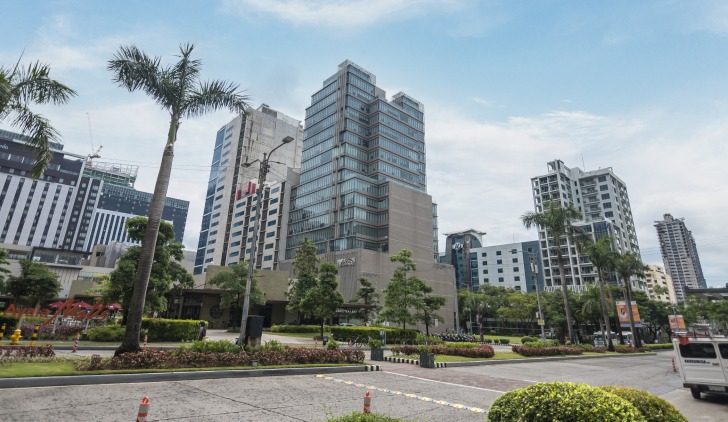
10. Cebu City, Philippines
Cebu is one of the most popular cities for tourists and is home to the biggest seaport in the country.
They are also a cultural and historical hub, with lots of museums, monuments, and sites to visit.
While overall crime is moderate at 38 per 100,000 people, tourists are often the target of pickpockets, muggings, and scammers.
Use common sense and stay alert when in this city.
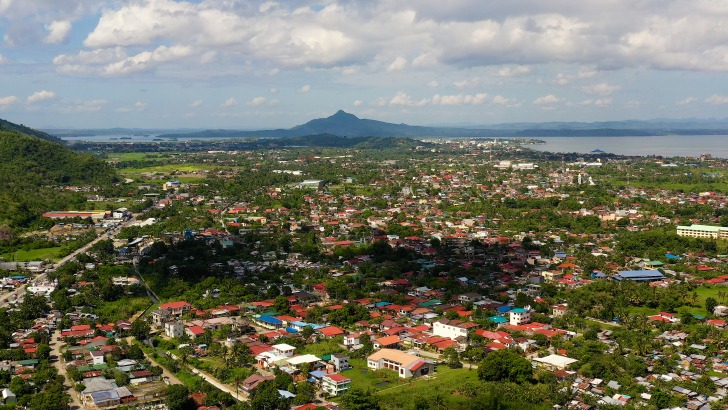
9. Tacloban, Philippines
Located on the island of Leyte, Tacloban has a population of about 251,000.
They are known for their tropical climate, boat regattas on the bay, and the large astrodome convention center.
The crime rate is 42.7 per 100,000.
People are most worried about home break-ins, drug activity, and vandalism.
Tourists are often victims of muggings, scams, and identity theft.
Use care at ATMs in this city.
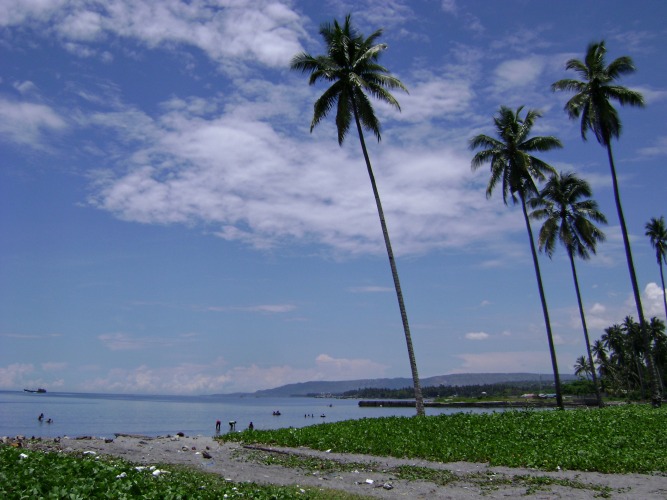
8. General Santos, Philippines
With a population of around 680,000, General Santos is known as the tuna capital of the Philippines.
It’s also home to world boxing champion Manny Pacquiao.
Unfortunately, like much of the island of Mindanao, General Santos has problems with terrorists and drug gangs.
This leaves visitors open to being taken hostage, getting caught in gun crossfire, and being in the wrong place when explosions occur.
Take extra care when in large public areas.
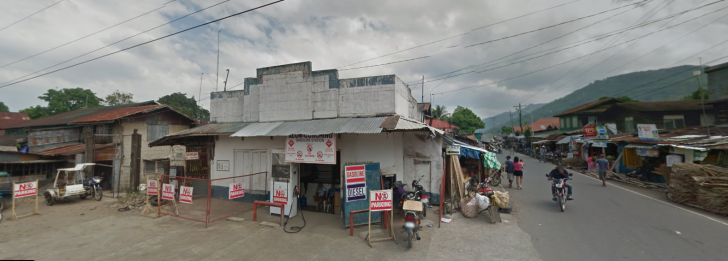
7. Isabela, Philippines
Isabela has a relatively small population of about 40,000 and is known for its small island beaches like Malamawi.
Unfortunately, it’s part of the larger island of Mindanao which is currently having serious issues with gang violence and terrorism.
The chances of being a victim of a crime in Isabela is 1 in 17.
There were several shootings in 2022, including several city council members.
Visitors should be aware of all travel advisories before going to this city.
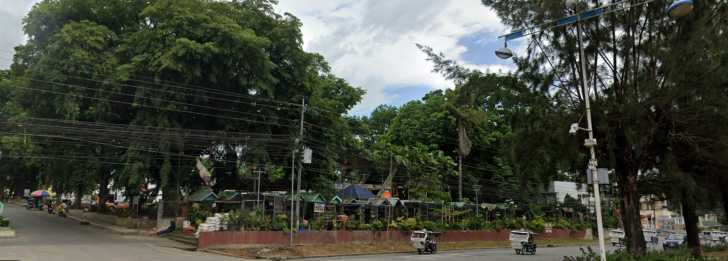
6. Kidapawan, Philippines
Set at the foot of Mt. Apo, on the island of Mindanao, Kidapawan has a population of approximately 160,700.
They are known for their production of exotic fruit and beautiful waterfalls.
If you visit this area, extreme caution should be used.
The danger goes far beyond their crime index.
This city is in an area that is plagued by terrorism and piracy.
Bombings often occur in public places during celebrations, sporting events, and even restaurants and churches.
Foreign visitors are sometimes caught in the middle and subject to kidnappings and held hostage.
Illegal gun possession and armed robberies are a big problem.

5. Cotabato, Philippines
Cotabato has a population of 325,000 and is the trade and commercial center of the island of Mindanao.
They are a large producer of coconuts, rice, coffee, and sugarcane.
Visitors can bask on the beautiful beach, visit the Grand Mosque, or Timako Hill, and see some monkeys.
But use caution when traveling here, as the crime rate is moderately high at 58.3 per 100,000 people.
It’s a common occurrence for gangs to clash with police and for there to be explosions in the northern part of the city.
Tourists should be concerned about theft, armed robbery, and assault.
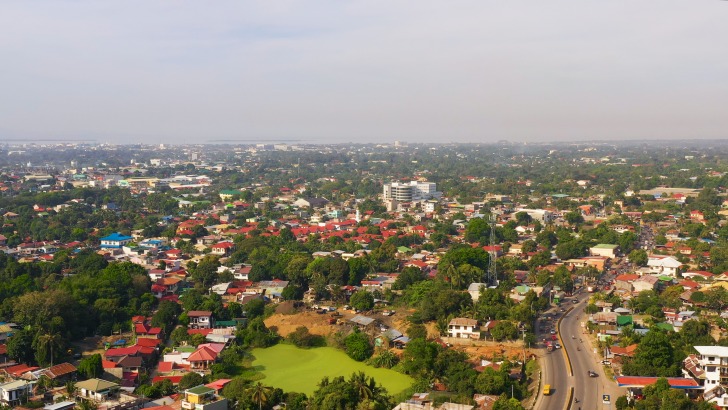
4. Zamboanga, Philippines
Zamboanga is the 3rd largest city in the Philippines and is home to the largest port in the country.
Nicknamed the “City of Flowers”, there’s plenty to do and see in this town.
From the Merloquet Waterfalls to the weaving village, where you can watch handmade crafts being made before purchasing.
There’s also a boardwalk at the pier where visitors can eat, visit shops, and watch the ships go by.
However, being a port city makes it a hotspot for human trafficking, as well as the illegal gun trade.
This means there is a high number of street gangs, drug activity, and petty crime.
There were a total of 2,123 crimes reported in 2022, including 32 shootings.
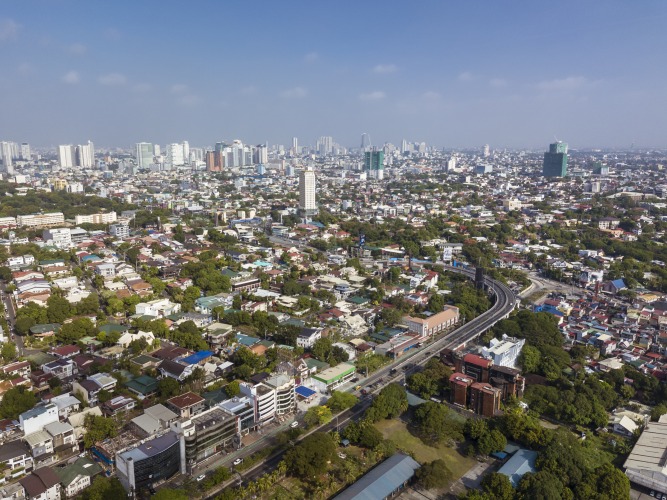
3. Quezon, Philippines
Located just north of Manila on the island of Luzon, Quezon is named after former president Manuel Quezon.
With a population of 2.9 million, it was the capital of the Philippines from 1948 to 1976.
It’s a highly urbanized city, known for its culture, media, commerce, and sports.
The overall crime rate is 68.8 per 100,000.
The most prevalent crimes are theft, sexual assault, and armed robbery.
However, there are several incidents of people being shot in the streets in broad daylight.
Most of these are due to street gangs and terror organizations.
When visiting, you should avoid remote areas, don’t walk alone, and use only verified taxis.
Women should be especially careful, as the sexual assault rate is high in Quezon.
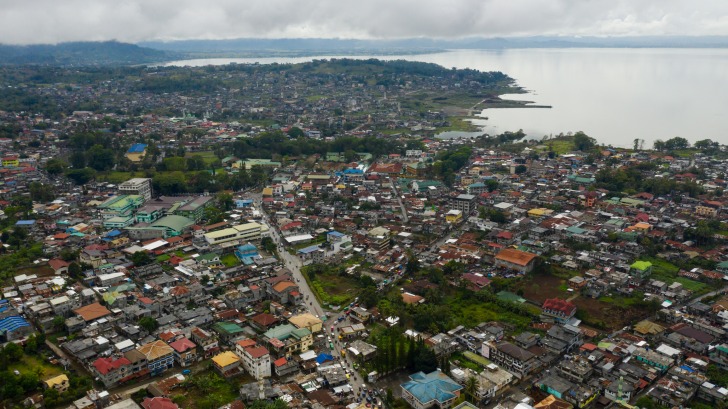
2. Marawi, Philippines
Located on the island of Mindanao, Marawi has a population of 207,000 and is the trading center for the island.
They specialize in Muslim handcrafts and bladed weapons.
The city is home to Mindanao University.
In 2017, government forces began a siege on the city to root out Maute rebels that were linked to Islamic terror groups.
The assault took 5 months and left over 1,000 people dead.
Much of the city was destroyed and became a sort of lawless ghost town.
The crime spiked to 80 per 100,000 people.
Though it’s making a comeback, the government recently issued an advisory about visiting Marawi due to terrorist acts, civil unrest, and kidnappings.
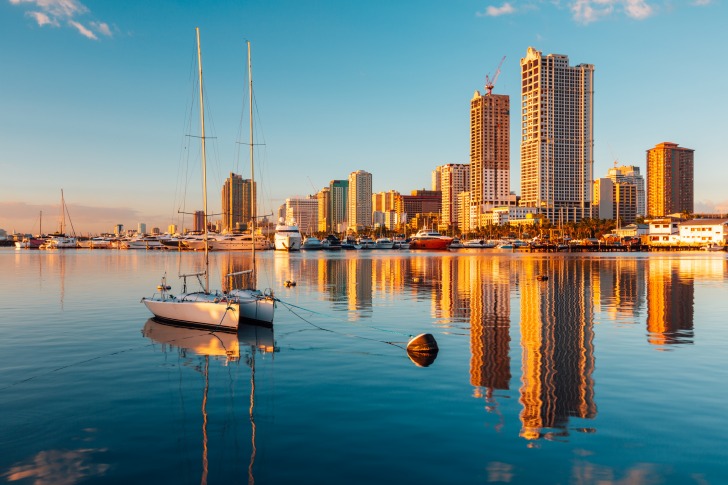
1. Manila, Philippines
Manila is the capital of the country and has a population of 1.78 million.
Nicknamed the “Pearl of the Orient “, there’s a whole lot to do and see in Manila.
From museums and shopping to parks and a giant outdoor flea market, you’re never at a loss for activities.
There’s also the Manila Baywalk and diving in the coral reefs.
However, Manila also consistently ranks in the top ten for most dangerous cities in the world.
The overall crime rate is 73 per 100,000 people.
Last year, there were 468 murders, 688 assaults, 1,239 armed robberies, and 946 sexual assaults.
Additionally, there were over 3,600 drug arrests.
Tourists must be most concerned about theft, muggings, and scams, especially from taxi drivers.
However, there have been a number of incidents where tourists have been kidnapped and sexually assaulted.
When visiting Manila, never leave your drinks unattended, and be extremely careful when using the ATMs.
5 Safety Tips For Traveling To The Philippines
- Avoid renting a car, as traffic laws are often not obeyed. There are also a lot of scooters and motorbikes that weave in and out trying to sell goods. Download the Grab app when you get to the Philippines. It’s a verified car service that’s similar to Lyft.
- Don’t leave anything unattended. Don’t even put cellphones or purses on your table when eating at a restaurant.
- Ask your hotel manager where NOT to go.
- Stay in well-lit, populated areas.
- Under no circumstances should you buy, use, or be in possession of illegal drugs. It’s never a good choice wherever you go, but the Philippines has very strict laws and their jails are not welcoming, to say the least. And yes, this includes marijuana!
Philippines Safety Overview
READ THE FULL REPORT: Philippines Safety Review
Safety Index: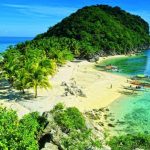
- OVERALL RISK: MEDIUM
- TRANSPORT & TAXIS RISK: MEDIUM
- PICKPOCKETS RISK: HIGH
- NATURAL DISASTERS RISK: HIGH
- MUGGING RISK: MEDIUM
- TERRORISM RISK: MEDIUM
- SCAMS RISK: HIGH
- WOMEN TRAVELERS RISK: MEDIUM
Frequently Asked Questions
What Currency Is Used In The Philippines?
The peso is the national currency.
Travelers’ checks are generally not accepted.
It’s best to use a major credit card.
Is It Safe To Drink Tap Water?
No.
The water in the Philippines is not always treated properly and can be full of contaminants.
Go for bottled water.
What Clothing Should I Pack?
It’s best to wear lightweight and comfortable clothes.
Cotton and linen blends are best.
Comfortable shoes are a must.
Do pack a sweatshirt or hoodie in case you travel up into the mountains where it can get chilly.
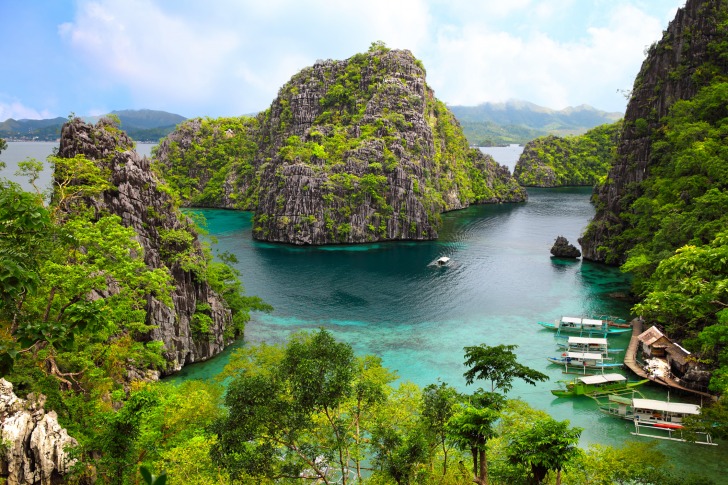
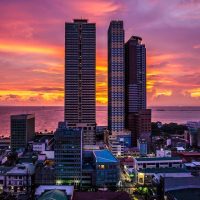
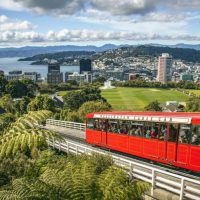

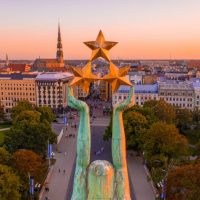

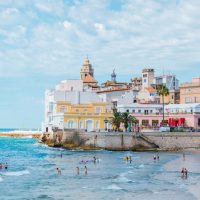





you dont go diving in the coral reefs of manila. manila dont have none. also, manila is not that dangerous. not sure about foreigners, but i, a filipino, can walk around town at night, put my phone on the table when im eating, etc. just use common sense and you will be fine. areas to stay away from, however, are the usual sketchy, poorly lit places, and Tondo, especially during a fiesta. try to stay far away from Tondo during a fiesta. there are compounds there where you walk in and you either walk out with a stab wound or you dont walk out.
The Philippines is a beautiful country with a rich culture and friendly people, but it’s important to be aware of the potential dangers and take precautions when visiting.
In my trips to Philippines, the greatest danger is ‘going to the wrong places’ or meeting girls… MANY girls will do anything for money. HOWEVER, true moral good girls are there MORE than in the USA and Canada. Churches who preach the bible and not ‘man’; will have some truely good girls with good traditional values and roles in marriage. HOWEVER… do not try online, it is a waste of money.. .99% of the good girls will NOT go on any dating site. you go there, stay out of clubs, go to church and markets…. and at times you will find ‘Godly girls’ for marriage. .. if you are a true man in Christ, good. If you are religiously luke-warm and worldly, stay away. ALSO, while the Catholic pope wants us all to be LG, etc.. most current Filipinos ages 19 to 45 are straight and GOD focused. some are Jesus girls. HOWEVER, older girls who have worked abroad for their greedy parents, end up with nice homes in late 30s and into 40s… and just can not ‘be feminine in marriage’ to any man. They want marriage, but on their terms not Gods. I recommend you consider 20s and early 30s… whose God is the Lord and not their ‘needs’; who are ‘free’ from family money enslavements.